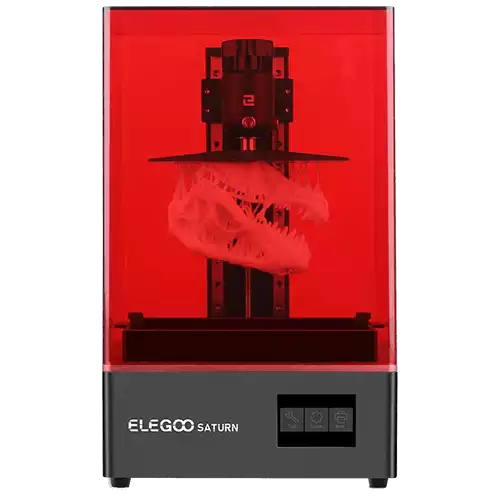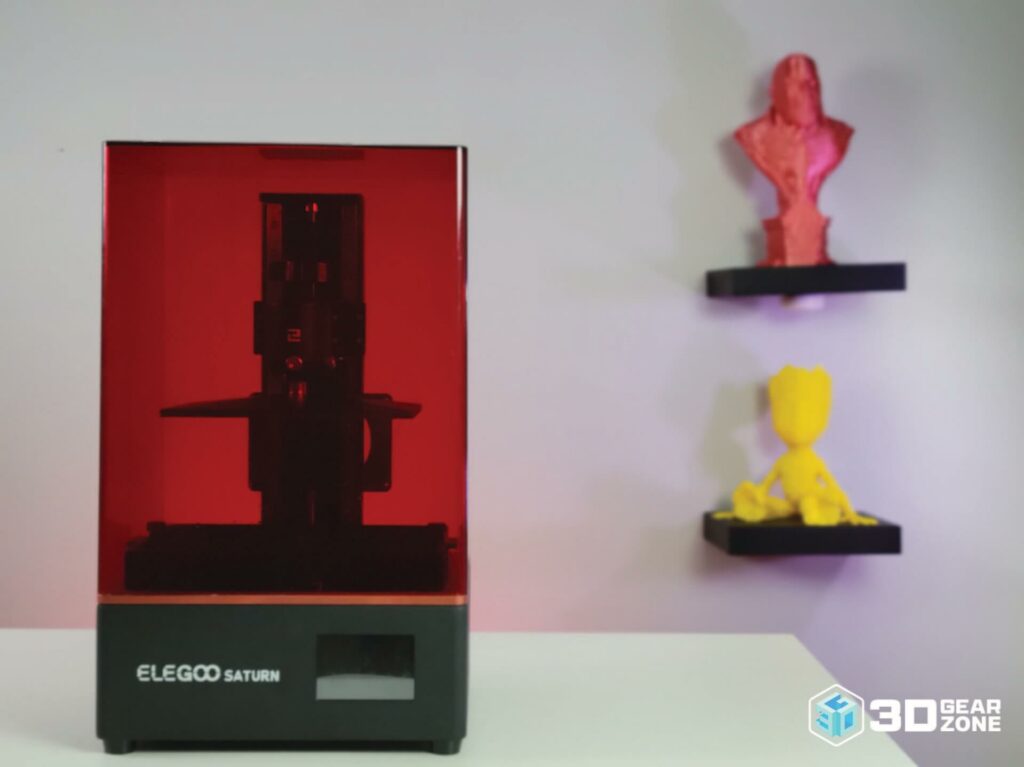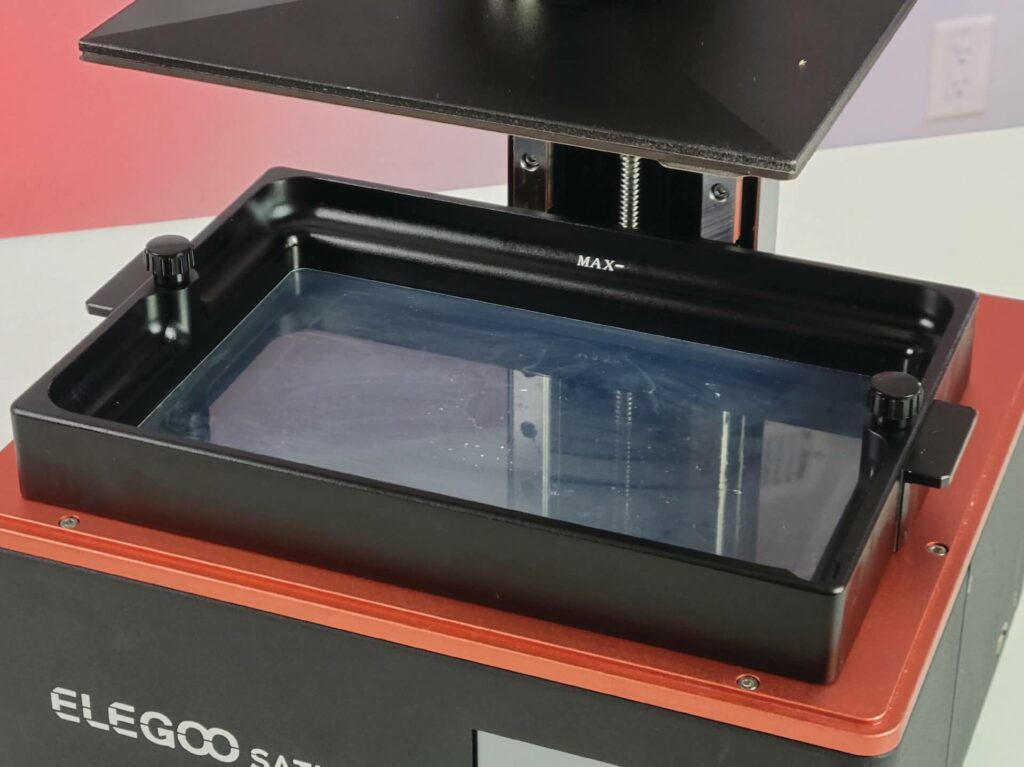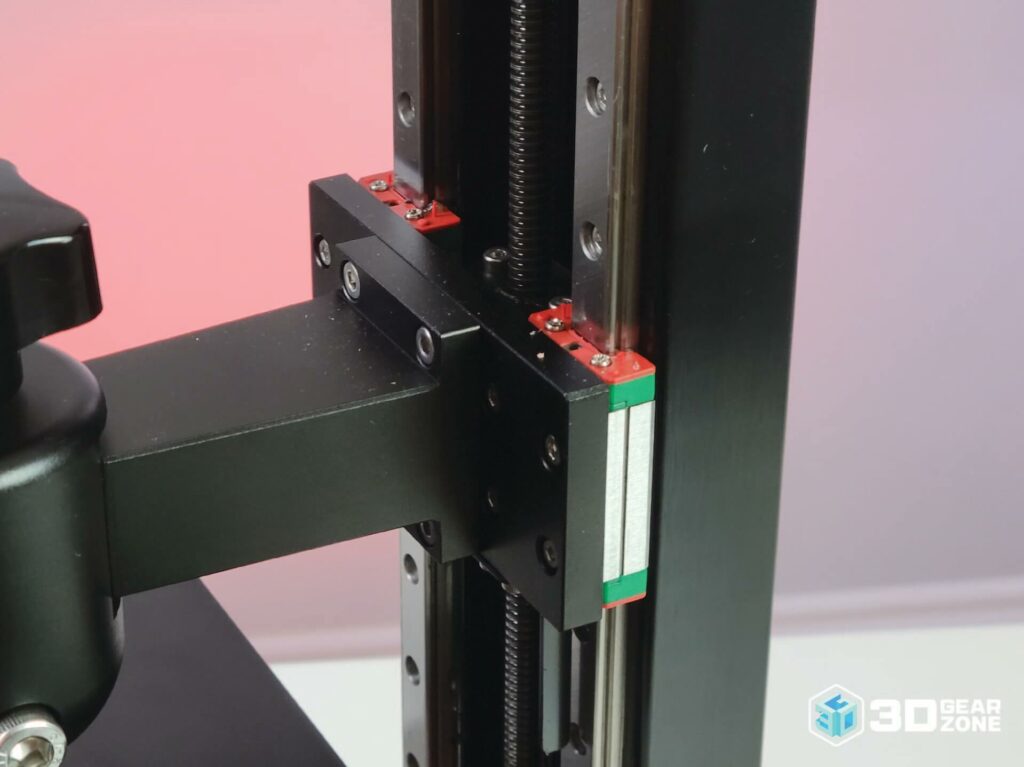While the ELEGOO Saturn produces great prints, there are a few points we would like to address in regards to ELEGOO’s claim of print speeds and issues with its build size, as outlined below.
Print Speed
With the inclusion of the monochromatic LCD in the ELEGOO Saturn, print curing times have decreased from 6 seconds to 2 seconds. ELEGOO claims that its new monochromatic LCD lets the Saturn print up to 300% faster than the previous ELEGOO Mars Pro; however, print curing times were only a fraction of the time the printer needed to start the next layer. The majority of the time is taken by moving the build plate to its next position, making the actual speed increase closer to 30-50%.
Build Size Suction Force Issues
Resin prints experience a great amount of suction force when the build plate is lifted to the next position. The Prusa SL1 attempts to reduce this by tilting the resin vat, whereas the Form 3 uses the laser unit to gently push the print to the next position. ELEGOO does not have a system in place to reduce suction forces, and as a result, users may see that prints located near the center of the build plate break more often than prints located near the edges of the build plate.
Minimum Resin Levels
For resin printers to successfully complete a print, their resin vat must contain a minimum amount of resin that does not get consumed. As resin is much more expensive than filament, users must consider this when choosing to go with a resin 3D printer. With smaller resin printers, this isn’t too much of an issue as it only requires around 30mL to keep the resin vat at a minimum level. However, with larger resin printers, like with the ELEGOO Saturn, users must keep around 70mL of resin in the vat at all times, which can become costly.
Setting Up Prints
ELEGOO ships their Saturn printer with Chitubox slicer, an extremely popular 3rd party resin slicer. Chitubox has a number of features like model hollowing, hole generation and auto supports, all staples in the resin 3D printing market. The user interface is simple and easy to navigate, and Chitubox is one of our preferred slicers for resin 3D printing (alongside Lychee slicer).
Chitubox has preset profiles for the ELEGOO Saturn, which makes getting prints ready extremely easy, allowing users to be confident that Chitubox will slice 3D models for reliable resin 3D printing.
Users familiar with the Mars 2 Pro or EPAX’s line of printers will find the workflow of the Saturn identical to those smaller printers as it shares the exact same user interface. Menus are intuitive, and the text is large and easy to read.
Noise Levels
Unlike FDM printers, resin printers only have 1 stepper motor used to move the z-axis, making the Saturn relatively quiet while operating. The loudest components of the ELEGOO Saturn are the cooling and vent fans that run continuously. With the increased size and power of the Saturn resin printer, ELEGOO included additional fans to adequately cool the printer. As a result, the ELEGOO Saturn is slightly louder than its smaller counterparts, outputting around 43db of noise when idle and in motion.








